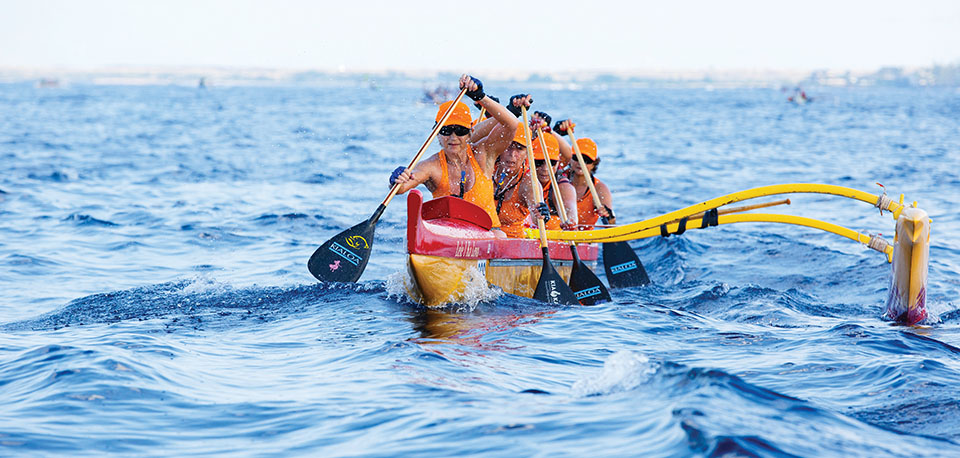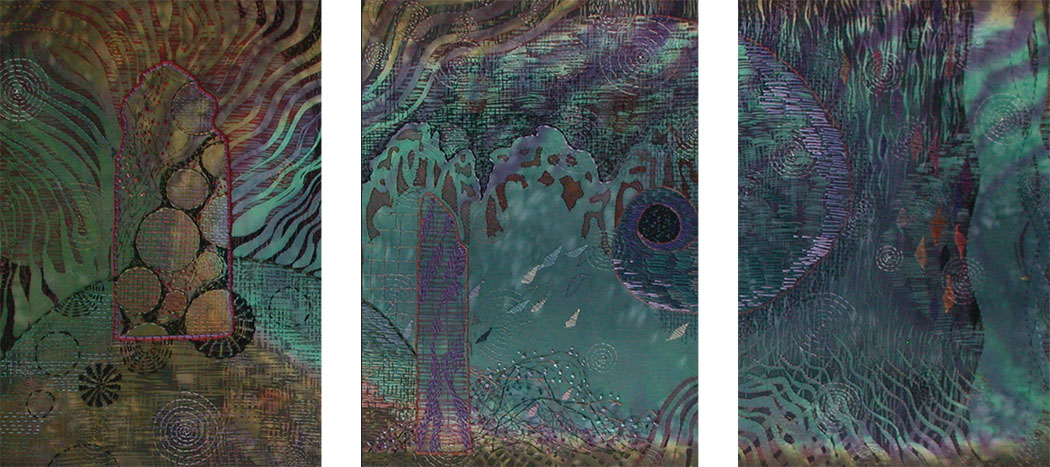
Healing Art: The Metamorphoses of Phan Nguyen Barker

By Alan D. McNarie
“Never in my life did I see more beautiful, beautiful flowers, foliage, ocean,” recalls Phan Nguyen Barker (pronounced Fawn), of her first days in Hawai‘i. “So I began painting—painting flowers like crazy.”
That’s a story shared by hundreds of artists who’ve moved here. For better or for worse, Hawai‘i Island lures and shapes artists with its lush greenery, abundant flowers, intense tropical light, dramatic skies, fiery lava eruptions, and mountainous and boundless ocean. Hawai‘i is a visual feast. And that landscape also has its pitfalls: it’s so rich that many artists never get beyond its surface.
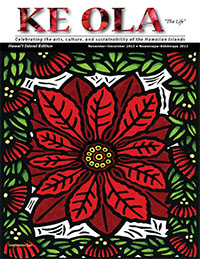
Phan, however, didn’t stop with flowers. She keeps pushing her art to its limit, then discovering something beyond: from complex natural landscapes painted in dyes and wax on silk, to abstract explorations of the soul, to incredibly complex pieces that combine techniques from batik to crochet. A Phan Barker exhibition routinely breaks the Star Trek Barrier, going where no man has gone before. That’s why when Phan has a new show, the reception is usually packed with other artists.
This is all the more remarkable because of the physical journey that her life has taken. Phan started her life as refugee. She was born in 1946 in Tu Chau, a predominantly Catholic village north of Hanoi. When Vietnam was partitioned in 1954, young Phan fled with her father and siblings to South Vietnam, leaving her mother behind in a grave with no headstone. She grew up with the Vietnam War raging around her. As a young woman, she got a job as a clerk/typist at the U.S. Air Base at Bien Hoa, despite knowing “only a few words of English.” Later, she worked as a volunteer interpreter for Father James Cain, an Air Force chaplain.
Cain suggested that she go to America to study. Getting permission to leave from her own government involved endless paperwork and delays. Then, just as the red tape logjam seemed to have broken, a new obstacle rose.
 “Father Cain had someone drive me from Bien Hoa to Saigon,” she recounts. “Except this was in August, 1969. Pan Am went on strike. My visa expired. So Father Cain had to take me back to the Ministry [of the Interior]. They asked to see the document that proved I had paid all my taxes. I didn’t have it because I’d already given them my papers.”
“Father Cain had someone drive me from Bien Hoa to Saigon,” she recounts. “Except this was in August, 1969. Pan Am went on strike. My visa expired. So Father Cain had to take me back to the Ministry [of the Interior]. They asked to see the document that proved I had paid all my taxes. I didn’t have it because I’d already given them my papers.”
The impasse was only broken when she burst into tears. An official watched her crying, then went into the back room and found her folder. Her visa was renewed. She finally got on her flight. Phan was 24 years old.
“I was sitting in the plane and I looked out the window, and I thought, I don’t think I’ll ever return to this painful place,” she remembers.
The pain continued after she left. When the South Vietnamese government fell, Phan’s father was put in a “re-education camp.”
“When he came back to his house in Bien Hoa, my sister looked at him and said, ‘No, go away!’ She thought he was a beggar,” Phan says.
Eventually, she would help bring her father and other family members to America. However her father only lived for six months after arriving.
After Phan Nguyen reached America, she stayed with relatives of Father Cain in Phoenix, AZ, enrolled in a business college and got a student visa, though she struggled because of her English. Eventually she transferred to Phoenix College, changed her major to Arts Education, and finally got her bachelor’s degree in Secondary Art Education from the Arizona State University in 1975. A friend in Phoenix introduced her to batik, the art of using wax to control the dyes in fabrics. Batik is most famous for its use in colorful Indonesian printed fabrics. What Phan did with it was something no one could teach her.
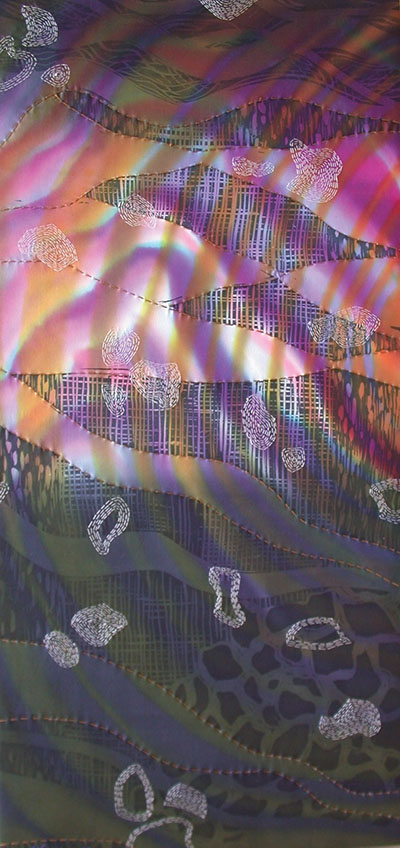 “I have a desire to paint nature, so I thought, how am I going to combine dye and silk and wax and landscape and seascape and nature? So I learned it by just doing it,” she says.
“I have a desire to paint nature, so I thought, how am I going to combine dye and silk and wax and landscape and seascape and nature? So I learned it by just doing it,” she says.
The results were unique: vivid, complex silk paintings whose detail rivaled those done in oil or pastels. And when Phan moved to Hawai‘i Island in 1983 with her first husband, she found the perfect landscape to go with her new technique.
Her unique silk paintings soon made a name for her. She taught her technique to other artists. Some, such as Patti Pease Johnson and Elizabeth Paine, began selling their own batik silk paintings in a clearly similar style. Effectively, Phan had founded a new school of painting.
Other artists, even if they didn’t become batik silk painters, flocked to her classes for inspiration.
“You can walk into a workshop to a medium which you’ve never worked in before, and Phan can give you the confidence to complete a work that inspires you to do more,” remarked Kona Artist Lisa Bunge, at the opening reception for a Barker exhibit at Volcano Art Center last spring.
That would have been enough for many artists. For Phan, it was just the beginning.
In 1991, she says, “I had a show scheduled with Volcano Art Center. I had already painted flowers, forest, landscape, [and] seascape of Hawai‘i. I was beginning to think I wanted something new, a challenge.”
She saw an article by Volcano entymologist Bill Mull about insects in the rainforest. It triggered something inside.
“I said, ‘Why don’t I paint the forest through the eyes of a butterfly, or better yet, a caterpillar?’ ” she recalls. “I got a book about butterflies and said, ‘Oh, my God. That’s me. I’m going through metamorphosis.’” So she created a silk painting called Metamorphosis from the viewpoint of a butterfly just as its cocoon began to rip open. More paintings followed that looked wholly different from the ones that had made Phan’s reputation.
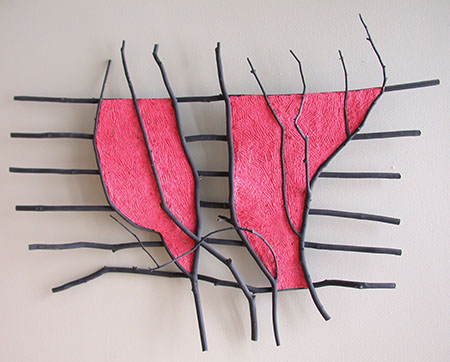
“The series is about me changing from realism to abstract—but spiritually, I’m also changing,” says Phan.
The next revolution took her back to her roots. In January of 1992, she finally returned to Vietnam with American journalist Jeannette Foster.
“I felt I was ready to go back,” she says. “On the conscious level, I said I was going to paint Vietnam so people could see how beautiful it was, and not just a war zone.”
The reality of Vietnam brought back a flood of emotional pain. With a sister who’d stayed in Vietnam, she journeyed back to Tu Chau to visit her mother’s grave.
“In my memory there was a beautiful red brick path,” she recounts. “But when I returned, it was not very beautiful. It was dirty and there were dog droppings, and there were children with dirty sleeves and no shoes. I remembered that I was one of those children. I had no shoes for many years.” She had sent money back to a relative to have a headstone put on her mother’s grave, and somehow that had never happened. The grave was simply a mound with a simple cross atop it.
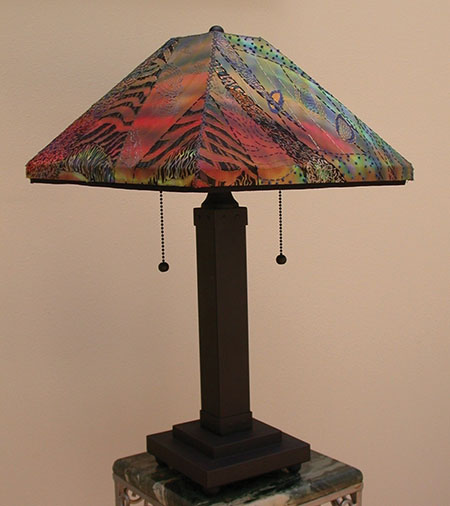
“When my mother died, I had no feeling,” she says. “I didn’t understand what death means, until I was 11. Before my mother died, she bathed us. She gave all of us a bath. I never forgot that.”
It took her months to recuperate from the trip emotionally.
As a part of that healing process, she turned again to her art, and her art again reinvented itself. The result was The White Mourning Cloth series, (in many Asian nations, the traditional color of mourning is white), and again, it was like nothing she’d done before. Some of her pieces broke away from silk painting entirely and explored new media.
A Poem for my Mother, for instance, consists of a matrix of branches embedded in a rough paper made from “cotton linter, mourning cloth, banana bark” and “pigment”; the textures recalled the rough materials of the village hut she and her family lived in for five years in South Vietnam. The piece was chosen for the Smithsonian Institution Traveling Exhibition Service.
“At first I wanted The White Mourning Cloth series to be my own private ‘spiritual purification,’ a ‘healing ceremony’ for myself,” she wrote of the exhibition. “Then when I visualized people who came to the opening of the exhibition, I could see the viewers through ‘the window’ of the artwork. They would become a part of the work. I asked myself, ‘What about their pain, their sorrow and their unresolved issues—about the Vietnam war, or any war? Are we not ONE SPIRIT, ONE CONSCIOUSNESS, ONE HUMANITY, ONE WORLD?’ Then, we must have one pain, one sorrow, and the same unresolved issues. We can heal ourselves and as a consequence, heal others.”
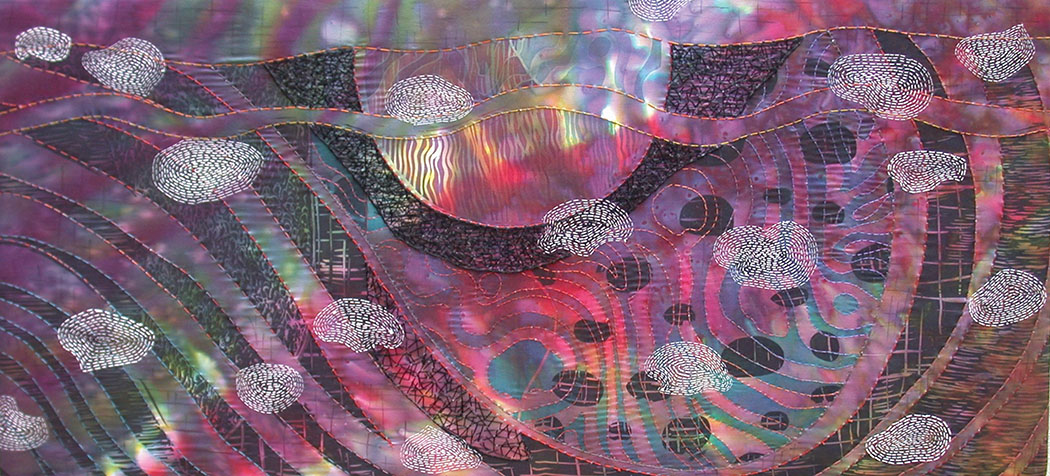
Her art since then has continued to metamorphose, exploring spiritual territory where few artists would dream to tread. For instance, Soulscape. She imagined, “If you paint your soul, what would it look like?” To tackle such subjects, she’s invented her own vocabulary of abstract shapes. Soulscape uses concentric circles symbolizing energy and tombstone shapes “representing what we have to let go” with fish-like forms swimming among them.
For her, the piece is about “life and death and life again,” Phan says. “A part of you dies. You leave it and just let go, because a part of you is always growing.”
Others can look at those shapes and come up with different interpretations. That’s what good abstraction does: it makes our brains change, without always giving easy answers.
She’s also incorporated another level of technique into her recent works, making the silk more three dimensional by incorporating needlework—borrowing stitches and techniques from a whole range of fabric arts, from Hawaiian quilting to crochet. These avant-garde works do share one common trait with traditional Hawaiian quilting: they’re incredibly labor-intensive. A single one-by-two-inch detail of a piece called The Womb, for instance, contains miniature crocheted net of silk threads, in which each of the hundreds of links in the net contain at least four different colors of thread, and then no two of the polygons formed by the threads are alike.
 “Oh, my, Phan, you’re really going crazy,” remarked one artist, staring at all those stitches.
“Oh, my, Phan, you’re really going crazy,” remarked one artist, staring at all those stitches.
The common thread to all these threads remains spiritual healing. For Phan, the pain of life is transformed into peace through creation. When a sister now living in Tucson developed cancer, Phan went to be by her side—and took along a work in progress, a complexly layered piece called The River Beneath the River.
“All the stitches were done in my sister’s kitchen,” she says.
At the opening of her show at Volcano Art Center last spring, Phan dropped a bombshell: “This is going to be my very last show on silk,” she said.
Wherever she goes next with her art, there are two near-certainties—it will be surprising, and it will be unique.
“I have completed the whole process,” she says. “I can go on and do something else.” ❖
Contact Phan Barker: PO Box 5, Hawaii National Park, HI 96718
Contact writer Alan McNarie: amcnarie@yahoo.com
